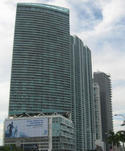Imagine that you own a service station that supplies fuel to the surrounding community, and you specialize in automotive repair. You're proud that your reputation for service attracts vintage Corvette owners. You worked hard all of your life, and your shop is your equity for retirement. Your business is entirely dependent on customers who enter via a left turn from Boone Avenue, a low traffic street, because drivers cannot get direct access to you from Highway 55, just south of your business.
One fateful day, a traffic engineer decides that the street serving as access to your station read more »





















